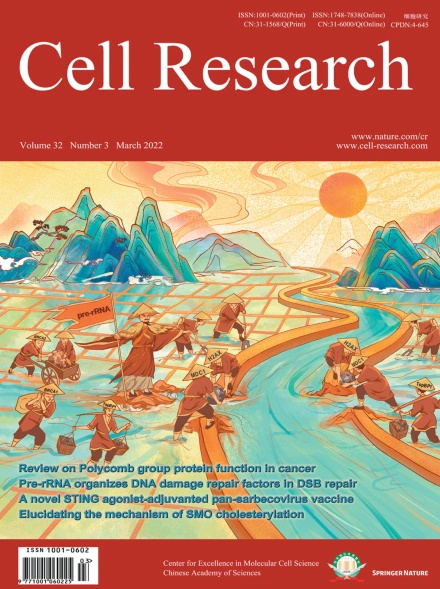
Advanced Search
Submit Manuscript
Advanced Search
Submit Manuscript
Volume 32, No 3, Mar 2022
ISSN: 1001-0602
EISSN: 1748-7838 2018
impact factor 17.848*
(Clarivate Analytics, 2019)
Volume 32 Issue 3, March 2022: 302-314 |
Crystal structure and catalytic mechanism of the MbnBC holoenzyme required for methanobactin biosynthesis
Chao Dou1,† , Zhaolin Long1,† , Shoujie Li1,† , Dan Zhou1,† , Ying Jin1,† , Li Zhang1,† , Xuan Zhang2 , Yanhui Zheng1 , Lin Li3 , Xiaofeng Zhu1,4 , Zheng Liu5 , Siyu He1 , Weizhu Yan1 , Lulu Yang1 , Jie Xiong1 , Xianghui Fu1 , Shiqian Qi1 , Haiyan Ren1 , She Chen3 , Lunzhi Dai1 , Binju Wang2 , Wei Cheng1,*
1Division of Respiratory and Critical Care Medicine, Respiratory Infection and Intervention Laboratory of Frontiers Science Center for Disease-related Molecular Network, State Key Laboratory of Biotherapy, West China Hospital of Sichuan University, Chengdu, Sichuan, ChinaMethanobactins (Mbns) are a family of copper-binding peptides involved in copper uptake by methanotrophs, and are potential therapeutic agents for treating diseases characterized by disordered copper accumulation. Mbns are produced via modification of MbnA precursor peptides at cysteine residues catalyzed by the core biosynthetic machinery containing MbnB, an iron-dependent enzyme, and MbnC. However, mechanistic details underlying the catalysis of the MbnBC holoenzyme remain unclear. Here, we present crystal structures of MbnABC complexes from two distinct species, revealing that the leader peptide of the substrate MbnA binds MbnC for recruitment of the MbnBC holoenzyme, while the core peptide of MbnA resides in the catalytic cavity created by the MbnB–MbnC interaction which harbors a unique tri-iron cluster. Ligation of the substrate sulfhydryl group to the tri-iron center achieves a dioxygen-dependent reaction for oxazolone-thioamide installation. Structural analysis of the MbnABC complexes together with functional investigation of MbnB variants identified a conserved catalytic aspartate residue as a general base required for MbnBC-mediated MbnA modification. Together, our study reveals the similar architecture and function of MbnBC complexes from different species, demonstrating an evolutionarily conserved catalytic mechanism of the MbnBC holoenzymes.
https://doi.org/10.1038/s41422-022-00620-2